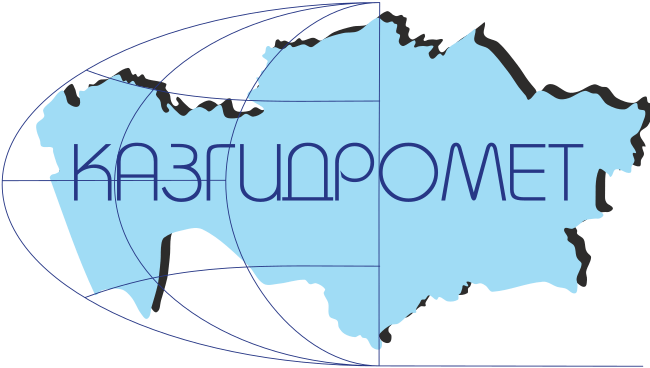ПРИМЕНЕНИЕ РАДАРНЫХ И ОПТИЧЕСКИХ ДАННЫХ ДЗЗ ДЛЯ ОЦЕНКИ КОЛИЧЕСТВА ПОСТРАДАВШИХ ДОМОВ, ПЛОЩАДИ И ГРАНИЦ ЗОН ЗАТОПЛЕНИЯ
DOI:
https://doi.org/10.54668/2789-6323-2024-112-1-144-160Ключевые слова:
Инфракрасный диапазон, поляризация, ДЗЗ, весенние паводки, половодья, граница и площадь затопленияАннотация
В статье представлен результат определения зоны затопления, количество пострадавших домов и здания города Атбасар от весеннего половодья 2017 года. Этот результат получен с применением трех доступных данных ДЗЗ Sentinel-2А, Landsat-8 и Sentinel-1B среднего пространственного разрешения. На первой стадии визуально проводился анализ данных ДЗЗ ближнего, коротковолнового, теплового инфракрасного (ИК) диапазона и поляризации по уровню контрастности. Были выбраны изображения по высокому уровню контрастности между двумя классами: водный объект и не водный объект (суша). На второй стадии вычислялись пороговые значения из выборки пикселей, относящихся к водным объектам, и далее создавались бинарные изображений. На третьей стадии, бинарные изображения логически суммировались для устранения облачного эффекта и нахождение результирующего бинарного изображение зоны затопления от весенних паводков. На четвертой стадии, результирующее бинарное изображение было наложено на ГИС данные города Атбасар, где, находились локации и количество пострадавших домов и зданий. По данному исследованию было обнаружено, что более 200 дачных домиков в результате половодья были подтоплены на северной, и 9 домов на восточной части города Атбасар. Согласно данным СМИ и официальных органов количество пострадавших домов в Атбасар составило около 400. Количество пострадавших домов, найденных по методу логического суммирования с тремя данными ДЗЗ составило 52%. Точность нахождения может быть значительно повышена при использовании данных ДЗЗ высокого пространственного разрешения. Результаты этого исследования могут быть полезны для службы ЧС, местным госорганам, страховым компаниям при оценке ущерба от весенних паводков.
Библиографические ссылки
Arkhipkin, O. P., L. F. Spivak, and G. N. Sagatdinova. 2010. "Development of Flood Space Monitoring in Kazakhstan." Geoscience and Remote Sensing, New Achievements: 419-436.
Benoudjit, A., and R. Guida. 2019. "A Novel Fully Automated Mapping of the Flood Extent on SAR Images Using a Supervised Classifier." Remote Sensing 11 (7).
Du, J., H. H. Zhou, P. A. Jacinthe, and K. S. Song. 2023. "Retrieval of lake water surface albedo from Sentinel-2 remote sensing imagery." Journal of Hydrology 617.
Farhadi, H., and M. Najafzadeh. 2021. "Flood Risk Mapping by Remote Sensing Data and Random Forest Technique." Water 13 (21).
Ghofrani, Z., V. Sposito, and R. Faggian. 2019. "Improving flood monitoring in rural areas using remote sensing." Water Practice and Technology 14 (1): 160-171.
Guo, J., X. P. Wang, B. Liu, K. Liu, Y. Zhang, and C. F. Wang. 2023. "Remote-Sensing Extraction of Small Water Bodies on the Loess Plateau." Water 15 (5).
Huang, M. M., and S. G. Jin. 2020. "Rapid Flood Mapping and Evaluation with a Supervised Classifier and Change Detection in Shouguang Using Sentinel-1 SAR and Sentinel-2 Optical Data." Remote Sensing 12 (13).
Kadapala, B. K. R., and K. A. Hakeem. 2023. "Region-Growing-Based Automatic Localized Adaptive Thresholding Algorithm for Water Extraction Using Sentinel-2 MSI Imagery." Ieee Transactions on Geoscience and Remote Sensing 61.
Kuntla, S. K., and P. Manjusree. 2020. "Development of an Automated Tool for Delineation of Flood Footprints from SAR Imagery for Rapid Disaster Response: A Case Study." Journal of the Indian Society of Remote Sensing 48 (6): 935-944.
Lammers, R., A. Li, S. Nag, and V. Ravindra. 2021. "Prediction models for urban flood evolution for satellite remote sensing." Journal of Hydrology 603.
Li, A. M., X. Y. Yan, and X. Kang. 2023. "Applicability study of four atmospheric correction methods in the remote sensing of lake water color." Geocarto International 38 (1).
Nikolaos, S., K. Kleomenis, D. Elias, S. Panagiotis, L. Panagiota, P. Vagelis, and C. Christos. 2019. "A Robust Remote Sensing-Spatial Modeling-Remote Sensing (R-M-R) Approach for Flood Hazard Assessment." Spatial Modeling in Gis and R for Earth and Environmental Sciences: 391-410.
Ongdas, N., F. Akiyanova, Y. Karakulov, A. Muratbayeva, and N. Zinabdin. 2020. "Application of HEC-RAS (2D) for Flood Hazard Maps Generation for Yesil (Ishim) River in Kazakhstan." Water 12 (10).
Pivaev, P. D., V. N. Kudryavtsev, E. A. Balashova, and B. Chapron. 2020. "SAR Imaging Features of Shallow Water Bathymetry." Physical Oceanography 27 (3): 290-304.
Quang, D. N., N. K. Linh, H. S. Tam, and N. T. Viet. 2021. "Remote sensing applications for reservoir water level monitoring, sustainable water surface management, and environmental risks in Quang Nam province, Vietnam." Journal of Water and Climate Change 12 (7): 3045-3063.
Sebastianelli, A., M. P. Del Rosso, S. L. Ullo, A. Radius, C. Clemente, D. Orlando, F. Biondi, and J. Wheeler. 2021. "A filtering problem: SAR speckle filtering." Artificial Intelligence Applied to Satellite-Based Remote Sensing Data for Earth Observation 98: 221-236.
Spivak, L., O. Arkhipkin, V. Pankratov, I. Vitkovskaya, and G. Sagatdinova. 2004. "Space monitoring of floods in Kazakhstan." Mathematics and Computers in Simulation 67 (4-5): 365-370.
Taloor, A. K., P. K. Thakur, and M. Jakariya. 2022. "Remote sensing and GIS applications in water science." Groundwater for Sustainable Development 19.
Wang, L. M., G. W. Jin, and X. Xiong. 2023. "Flood Duration Estimation Based on Multisensor, Multitemporal Remote Sensing: The Sardoba Reservoir Flood." Journal of Earth Science 34 (3): 868-878.
Zou, S., J. Abuduwaili, J. L. Ding, W. L. Duan, P. De Maeyer, and T. Van De Voorde. 2020. "Description and Attribution Analysis of the 2017 Spring Anomalous High Temperature Causing Floods in Kazakhstan." Journal of the Meteorological Society of Japan 98 (6): 1353-1368.
Тюменев С.Д. Водные ресурсы и водообеспеченность территории Казахстана: Учебник. – Алматы: КазНТУ, 2008. – 267 с.
Arkhipkin, O.P., Sagatdinova, G.N., 2016. The use of various optical and radar remote sensing data in operative space monitoring of flood in Kazakhstan. Journal of Siberian Federal University. Engineering & Technologies, 9(7), pp. 1045-1058.
Arkhipkin, O.P., Sagatdinova, G.N., 2017. The use of polarimetric radar data at space monitoring of high waters and floods. Sovremennye problemy distantsionnogo zondirovaniya Zemli iz kosmosa (Current problems in remote sensing of the Earth from space), 14(2), pp. 175-184.
Arkhipkin, O. P., & Sagatdinova, G. N. (2018). Possibilities of the joint use of optical and radar data in flood space monitoring. The International Archives of the Photogrammetry, Remote Sensing and Spatial Information Sciences, 42, 67-73





